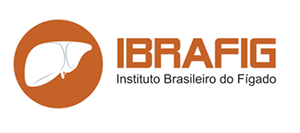Cirley Maria de Oliveira Lobato, Liana Codesb, Giovanni Faria Silva, Aécio Flávio Meirelles Souza, Henrique Sérgio Moraes Coelho, Maria Lucia Alves Pedroso, Edison Roberto Parise, Leila Maria Soares Tojal de Barros Lima, Luiz Augusto Borba, Andreia Silva Evangelista, Rosamar Eulira Fontes Rezende, Hugo Cheinquer, Aline Satie Oba Kuniyoshi, Rodrigo Sebba Aires, Eloiza Helena Dias Quintela, Liliana Sampaio Costa Mendes, Fábio Carneiro Vosqui Nascimento, José Eymard Moraes de Medeiros Filho, Maria Lúcia Cardoso Gomes Ferraz, Edson Abdala, Paulo Lisboa Bittencourt, Members of the Brazilian Real-Life Study about HCV treatment
ABSCTRACT
Introduction and objectives:
Direct antiviral agents (DAAs) including sofosbuvir (SOF), daclatasvir (DCV), simeprevir (SIM) and ombitasvir, paritaprevir and dasabuvir were introduced 2015 in Brazil for treatment of hepatitis C virus (HCV) infection. The aims of this study were to assess effectiveness and safety of HCV treatment with DAA in real-life world in a highly admixed population from Brazil.
Materials and methods: All Brazilian reference centers for HCV treatment were invited to take part in a web-based registry, prospectively conducted by the Brazilian Society of Hepatology, to assess outcomes of HCV treatment in Brazil with DAAs. Data to be collected included demographics, disease severity and comorbidities, genotype (GT), viral load, DAA regimens, treatment side effects and sustained virological response (SVR).
Results:
3939 patients (60% males, mean age 58 ± 10 years) throughout the country were evaluated. Most had advanced fibrosis or cirrhosis, GT1 and were treated with SOF/DCV or SOF/SIM. Overall SVR rates were higher than 95%. Subjects with decompensated cirrhosis, GT2 and GT3 have lower SVR rates of 85%, 90%
Comments are closed.





